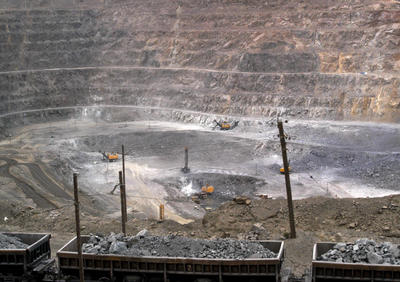Chinese companies see profits from rare earths fall in 2024
In a disclosure to the Shenzhen stock exchange, China Rare Earth Resources and Technology said the industry was facing a “fundamental stage”. China continues to be a leader in rare earth mining and processing, but the country’s economic woes and the willingness of other countries to build new supply chains are cutting into revenues.
Beijing (AsiaNews) – Despite China’s efforts to dominate the strategic rare earths sector, revenues and profits from mining and processing these minerals essential for the digital world have shrunk.
State-owned China Rare Earth Resources and Technology reported a 5.4 per cent drop in revenue in 2023 from a year earlier, while net profit slumped by 45.7 per cent.
The figures for the first quarter of 2024 are worse. Revenues fell by 81.9 per cent, leading to a net loss of 288.76 million yuan (under US$ 40 million), compared to a net profit of 108.97 million yuan in the same period a year earlier.
Other Chinese companies have also reported lower turnover of between 60 per cent and 79 per cent, in line with the general slowdown in the domestic economy.
In a disclosure to the Shenzhen stock exchange last week, China Rare Earth Resources and Technology said the sector is facing a “fundamental stage” characterised by rapid developments and structural adjustments on a global scale that have eroded earnings.
In fact, while China remains by far the world's largest producer of rare earths, other countries are building alternative supply chains.
For some types of minerals, new supply chains "have already been established," said China Rare Earth Resources and Technology; for this reason, it made "adjustments to its sales strategy," without giving further details.
An increasing number of Chinese companies have begun importing minerals mined abroad (especially in Myanmar) due to domestic economic difficulties, especially a decline in demand, which is not expected to improve any time soon with the company warning of the "risk" of a further price drop.
Official data from Chinese customs bear this out, according to Nikkei Asia. Imports of some rare earths are up by about 60 per cent, and a domestic cap on rare-earth mining was relaxed to allow a 21 per cent increase in domestic output.
Rare earths are a group of 17 minerals critical to the production of a range of technologies, from electric car batteries and wind turbines to solar panels.
According to the US Geological Survey (USGS), the world's reserves of rare earths amount to 110 million tonnes, 40 per cent are in China, followed by Myanmar, Russia, India, and Australia.
USGS data show that in 2023, China produced 240,000 tonnes of rare earths, about two-thirds of global production. The United States came in second, followed by Myanmar, with both tripling production last year.
In recent years, China has become an industry leader by improving its mining and processing capabilities, but also gaining control of several mines in other parts of the world.
A BBC investigation identified at least 62 projects for lithium, cobalt, nickel or manganese (minerals needed for green technologies) in which Chinese companies have a stake.
China introduced its first national regulations in 2010. Over the years, following a series of mergers, four major companies have emerged, including the China Rare Earth Group, which is directly controlled by China's State Council.
During a visit to Hunan province last month, one of China’s main rare-earth producing regions, Chinese President Xi Jinping reiterated the need to "further upgrade" the development and use of rare earths to generate "high-quality growth" and provide a "high level of security" to the country.
07/09/2020 16:03
29/08/2022 13:39
16/09/2022 14:31







.png)










